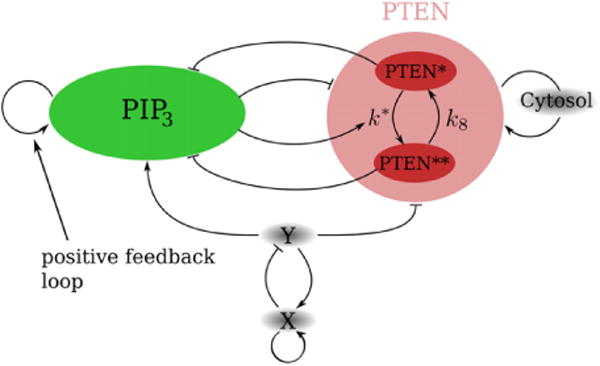Figure 2.

Schematic representation of the reaction-diffusion model consisting of membrane-bound and diffusible PIP3 and PTEN. PTEN is assumed to exist in two different forms, PTEN* and PTEN**, with different dephosphorylation rates. Furthermore, PIP3 and PTEN exhibit a positive feedback loop, resulting in excitable and bistable dynamics, respectively. The substances X and Y prime the formation of holes in the PTEN layer through a stochastic, excitable reaction-diffusion mechanism. Finally, PTEN can detach from the membrane in a PIP3-dependent fashion and can quickly reattach from a constant cytosolic PTEN pool using a positive feedback loop, which is activated by PTEN diffusing back from the non-attached membrane.
